#wildlife illustration
Text
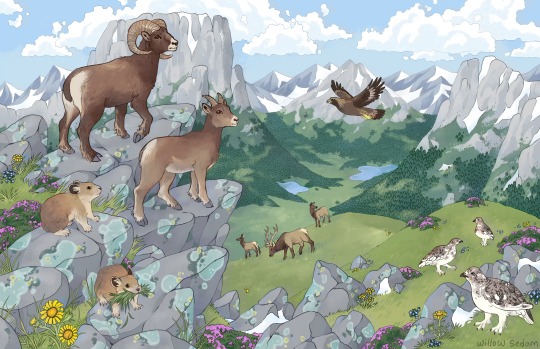


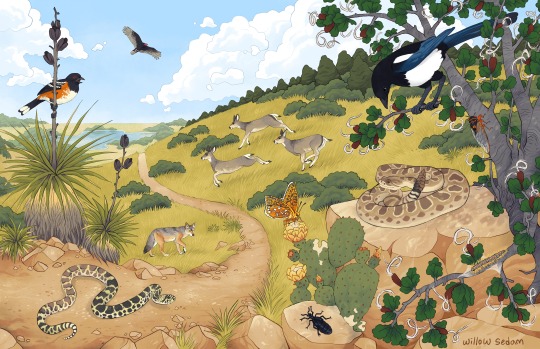

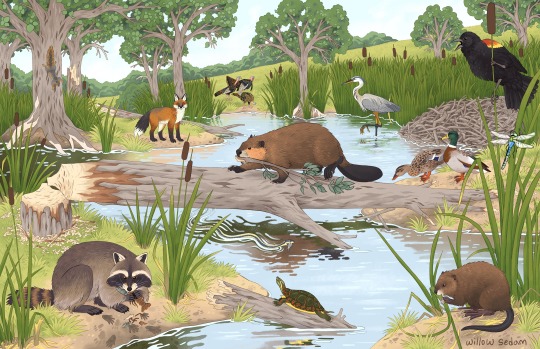
something a little different to finish up 2023. these are some ecosystem illustrations i did for my summer job in environmental education this year, featuring local communities of plants and animals. it was a real challenge and very out of my comfort zone, but a super great project to work on, and i'm happy with how they turned out - and that they'll be used in programming for hopefully a very long time to come!
#my art#art#digital art#illustration#wildlife illustration#nature illustration#here's to more getting out of our comfort zone in 2024!
2K notes
·
View notes
Text
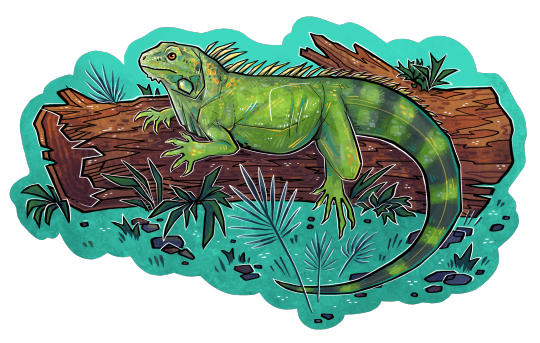
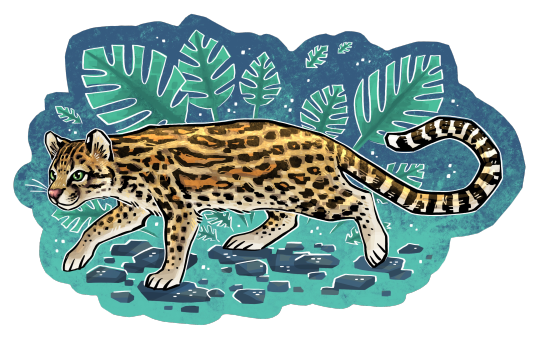



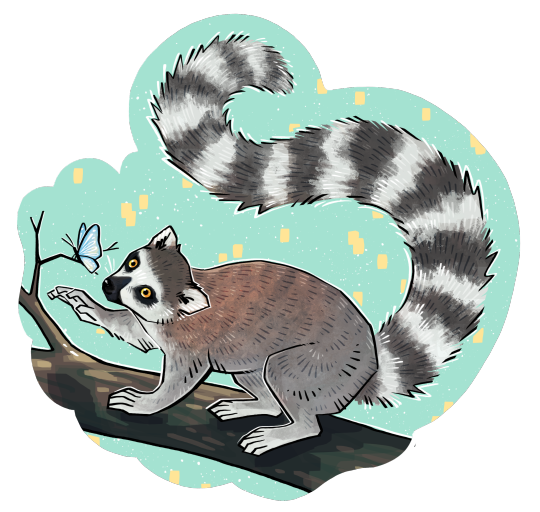
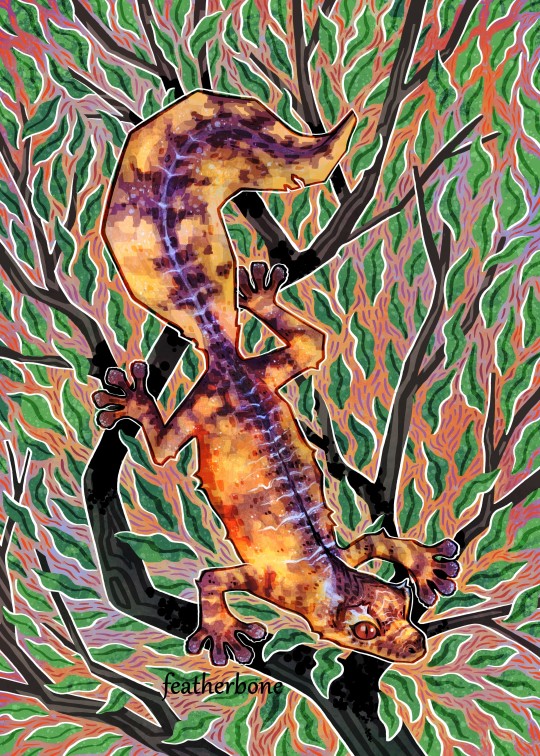
[ID: illustrations of an iguana, ocelot, atlas moth, tree boa, chameleon, and ring-tailed lemur, presented as die-cut stickers. below is a colorful illustration of a leaf-tailed gecko perched upside-down on a branch, surrounded by wavy leaves. end.]
This month on Creature Mail Club I present to you animals of the understory forest layer, including a whole bunch a reptiles and cats and bugs :-) support me on Ko-fi by the end of April for critters in your mailbox!
280 notes
·
View notes
Text

got bored with rendering the background. done as it's getting i think
727 notes
·
View notes
Text

blue jay on a bunch of value scale swatches !
303 notes
·
View notes
Text

Some recent seal sketches.
222 notes
·
View notes
Text

SciArt September day 9: Heart
Heart-spotted Woodpecker, what a perfect bird. This is another species I'd never heard of before this challenge, what fun to discover them!
#sciart september#birdblr#woodpecker#hearts#heart-spotted woodpecker#wildlife illustration#india#scientific illustration#birb#artists on tumblr
299 notes
·
View notes
Text

Scarce chaser, for class
#ratwalks art#scarce chaser#dragonflies#dragonfly#bugs#bug art#insects#insect art#entomology art#bug illustration#wildlife#wildlife art#wildlife illustration#animal art#animal illustration
168 notes
·
View notes
Text

Yellow Spotted Salamander 💛🌟
1K notes
·
View notes
Photo

Life in the Boreal Forest, illustrated by Gennady Spirin, 2009.
#animal art#animal illustration#wildlife illustration#childrens illustration#watercolor illustration#watercolor art#reindeer#deer#illustration#art#my post
459 notes
·
View notes
Text


gypaetus barbatus
the bearded vulture, also known as der lämmergeier and the ossifrage, is the only living bird species and one of the only vertebrates that specializes in bone-eating. bones make up around 80-90% of their diet.
today, they reside high in mountains in southwest and central asia, & east africa, but their range used to expand throughout south europe. in europe in the 1800s-1930s, bearded vultures were rumored to eat children and lambs (hence the german name "lämmergeier" - lamb vulture), and as a result of this negative reputation, were hunted to extinction in the alps. there have been successful reintroduction programs for bearded vultures in europe, but altogether they are still classified as "near threatened" for the same reasons as many vultures - declining food resources and poisoned carcasses.
1K notes
·
View notes
Text
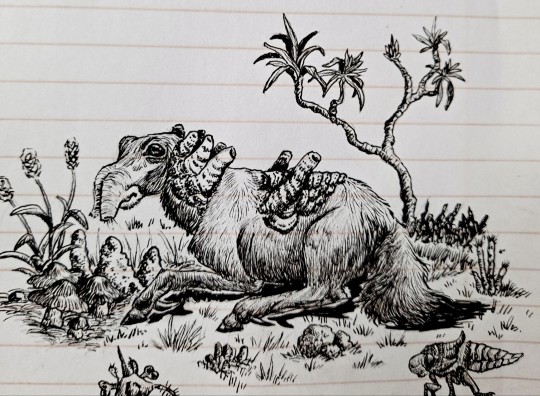
Although not the most common species of Hornblower, Horacio's Hornblowers are arguably the most well know representatives of this group. Large yet agile with a shoulder height of 2.12m, these ungulates can be easily identified by their independently mobile split trunks, another unique feature among hornblowers. Another unique feature of the species are their hooves, which have shifted from a cloven form to a single weight supporting toe, with the outer toe now sporting a heavily mineralized slashing blade capable of deeply lacerating the skin of most wildtype predators; and cutting a path through their native chokegrass thickets.
Moving on to the pipes for which their clade is named, these marvels of biological engineering are heavily reinforced with enamel and proteins, allowing all hornblowers nigh endless stamina as air constantly circulates through the surface area of their exceptionally complicated multi-chambered lungs, with Horacio's Hornblowers being exceptionally well suited to filtering air through their pipes- their native range in the Deeplands is exceptionally rich in noxious airborne substances, with sulfur dioxide in particular reaching concentrations that even the hardiest travelers may begin to struggle with- hence most explorers opting for integrated respiratory symbiotes when seeking out this elusive creature, prized as both genestock, and it's extremely acid resistant hide.
A small warning for those attempting to capture or study the Horacio's Hornblower- this animal possesses a unique lung microbiome rich in ricin producing bacteria. If startled, they WILL violently aerosolize ricin saturated mucus from all respiratory pipes. Take appropriate precautions. Not applicable to readers with a biological immunity to ricin, or exterior symbiosuits with said immunity.
#Annotated Guide for Casual Enthusiasts#Horacio's Hornblowers#ink illustration#ink art#wildlife illustration#speculative biology#speculative fiction#speculative evolution#scifi#Deepland Sog#body horrow cw#body horror
52 notes
·
View notes
Text

Crabeater seal! It eats krill. :-)
[ID: an illustration of a dappled grey seal with toothed teeth. It floats vertically, smiling open-mouthed, in blue water surrounded by a cloud of tiny, coral pink and white krill, stylized as brushstrokes. end.]
#seal#seals#crabeater seal#animals#wildlife illustration#no fun fact for this guy from me today#too tired to research#mmmh sick w a cold so I’m gonna post this n pass out#look at my seal
421 notes
·
View notes
Text


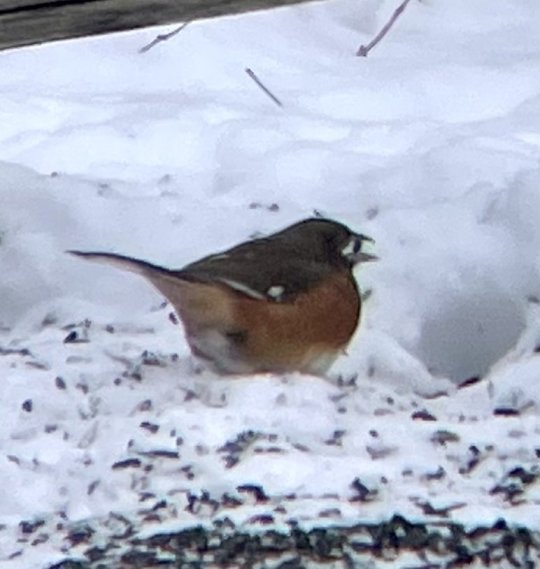
saw miss eastern towhee today (out of seasonal range + a lifer) and i was delighted by her pale butt plumage
308 notes
·
View notes
Text

Hidden singer (Coyote and Big Bluestem); Dec 2022, ink. ID in alt.
In the North American prairies, we talk about the "big four" characteristic grass species, which historically were among the most common prairie plant species and are noted for their affects on the rest of the habitat. They define the habitat, in the same way oak forest is defined by oaks. Everything else that lives there is shaped by them. This art represents Andropogon gerardii, whose common English names include Big Bluestem and Turkeyfoot.
#artists on tumblr#ink#prairies#my art#coyote#wildlife illustration#big bluestem#fountain pen#kinda surprised by how much ppl liked the other coyote so here's another fellow. unhinged lad. v fun to draw#big four prairie grasses#id in alt text#does it make a difference if I specify that? I'd imagine someone using a screen reader would be able to tell?#tho I suppose it's helpful for anyone who sorts stuff by described vs undescribed#hi new followers u never know what ur gonna get on this art blog - welcome to my brain its as chaotic as my desk#canis latrans#andropogon gerardii
394 notes
·
View notes
Text
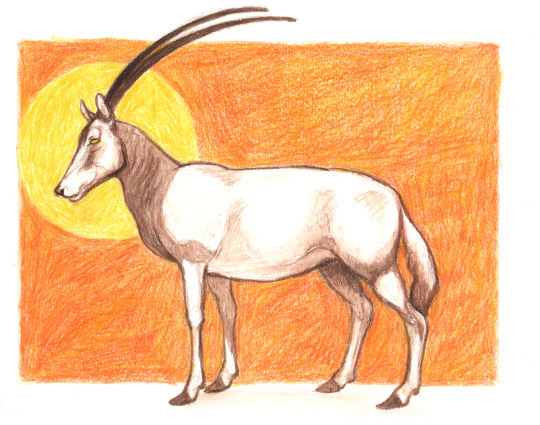
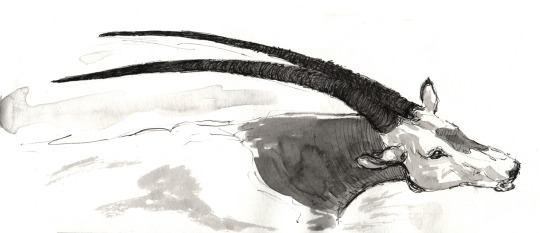
Scimitar-horned oryxes from my sketchbook.
Due to a combination of threats including excessive hunting by humans, droughts and loss of food sources caused by livestock grazing, the once-common scimitar-horned oryx became officially extinct in the wild in the year 2000. But thanks to persistent captive breeding and conservation efforts, last month saw the species become reclassified by the IUCN as Endangered, with a population of around 600 animals living free in Chad once more, and these numbers are gradually starting to rise. Their pale, ethereal appearance and very long horns have been suggested to have perhaps inspired stories of the mythical unicorn.
43 notes
·
View notes
Text
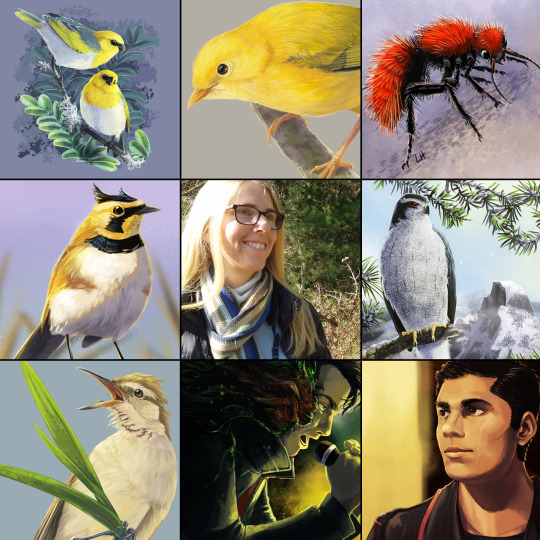
2023 was a busy year for me! Thankfully I have some art I can show you all - there's always stuff every year that I can't show until the next year, haha. Enjoy this eclectic mix of birds, fanart, and a velvet ant - that's about usual for me, I'd say!
#art vs artist 2023#birdblr#scientific illustration#lord huron#wildlife illustration#palila#golden white-eye#velvet ant#horned lark#american goshawk#saipan reed-warbler#johnnie redmayne#alex redmayne#artists on tumblr
69 notes
·
View notes